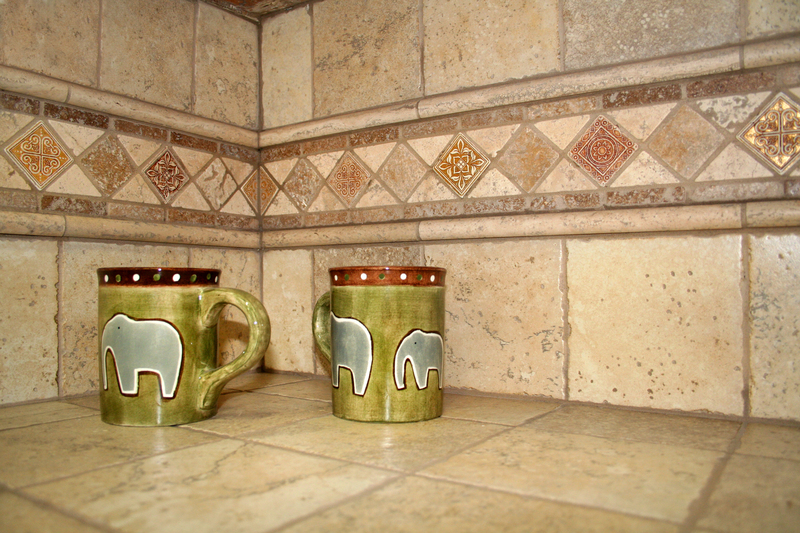Elevating Indoor Experiences with Quality Air
Posted on 03/06/2025
Elevating Indoor Experiences with Quality Air
Indoor environments play a critical role in our daily lives. With the average person spending approximately 90% of their time indoors, air quality often becomes an afterthought--yet it is a cornerstone of our overall health, productivity, and comfort. Elevating indoor experiences with quality air is not just about cleanliness; it's about creating wholesome atmospheres that nurture both body and mind. This comprehensive guide explores why indoor air quality matters, practical ways to improve it, and the transformative impact it can have on your life.
Why Quality Indoor Air Matters
Indoor air quality (IAQ) refers to the condition of air within and around buildings, especially as it relates to the health and well-being of occupants. Whether it's in homes, offices, schools, or recreational spaces, good air quality can elevate indoor comfort and performance in surprising ways. In contrast, poor air quality may contribute to a range of health issues--from minor irritations like headaches and fatigue to more serious concerns such as allergies, asthma, and long-term respiratory illnesses.
- Short-term effects: Eye, nose, and throat irritation, dizziness, and tiredness.
- Long-term consequences: Chronic respiratory diseases, heart disease, and even cancer.
Elevating indoor environments with high-quality air is a prudent investment in health, productivity, and overall happiness.

Understanding the Components of Indoor Air Quality
To effectively enhance indoor air experiences, it's important to understand the elements that impact air quality. These can generally be divided into:
- Physical factors: Temperature, humidity, and ventilation.
- Chemical pollutants: Volatile organic compounds (VOCs), carbon monoxide, radon, formaldehyde, and ozone.
- Biological contaminants: Mold, pollen, pet dander, bacteria, and viruses.
- Particulate matter: Dust, smoke, and microscopic particles.
A comprehensive approach to quality indoor air involves monitoring and controlling each of these factors, ensuring a safe and comfortable environment.
Transformative Benefits of Quality Indoor Air
1. Health and Well-being
The most immediate payoff of high indoor air quality is physiological. By reducing contaminants and allergens, indoor spaces become sanctuaries for people with existing conditions such as asthma or allergies, as well as for children and the elderly who are more susceptible to airborne irritants.
- Reduced illness: Minimize exposure to pathogens, lowering risk of colds, flu, and respiratory infections.
- Allergy relief: Less circulating dust, pet dander, or pollen leads to fewer allergy flare-ups.
- Enhanced sleep quality: Clean air promotes deeper, more restorative rest cycles.
2. Boosted Productivity and Focus
Studies have shown that elevated indoor air quality can improve cognitive function, mood, and productivity. Offices and schools with advanced air purification systems often report fewer sick days and higher engagement among staff and students.
- Improved concentration and faster decision-making.
- Lower absenteeism due to fewer people falling ill.
- Greater comfort leads to sustained focus and energy throughout the day.
3. Enhanced Comfort and Experience
Air quality improvement affects more than just health metrics; it reshapes the sensory and emotional atmosphere of an indoor space. Fresher air feels more inviting, creating environments where people want to spend time.
- Minimized odors from pets, cooking, or chemicals.
- Consistent temperature and humidity improve comfort.
- Peace of mind knowing your air is clean and safe.
Key Strategies for Improving Indoor Air Quality
There are various time-tested and cutting-edge ways to elevate indoor experiences with quality air. From maintenance best practices to embracing smart technology, these methods can be tailored to any living or working environment.
1. Increase Ventilation
Proper ventilation is the foundation of healthy indoor air. Opening windows, using exhaust fans, or installing advanced HVAC systems can all help bring fresh air inside and expel pollutants.
- Regularly ventilate tightly sealed spaces, especially when using chemicals or cooking.
- Consider energy recovery ventilators (ERVs) or heat recovery ventilators (HRVs) to balance fresh air and energy efficiency.
2. Use High-Efficiency Air Purifiers
Modern air purifiers employ technologies like HEPA (High-Efficiency Particulate Air) filters or activated carbon to capture fine particles and absorb harmful gases.
- Choose air purifiers appropriate for the room size.
- Replace or clean filters as per the manufacturer's recommendation.
- Look for models with additional features, such as UV-C lights to neutralize bacteria and viruses.
3. Maintain Humidity Control
Humidity levels between 30% and 50% discourage mold growth and dust mite proliferation while keeping the air comfortable for breathing. Humidifiers add moisture in dry climates, while dehumidifiers are beneficial in damp environments.
- Use hygrometers to monitor humidity levels regularly.
- Clean and maintain humidifiers and dehumidifiers to prevent microbial growth.
- Repair leaks promptly to prevent mold issues.
4. Regular Cleaning and Maintenance
Dust, pet hair, and molds can all accumulate in carpets, upholstery, and ventilation systems. Establish a cleaning schedule to reduce indoor pollution sources.
- Vacuum with HEPA-filtered vacuums.
- Wash bedding and curtains frequently.
- Remove clutter where dust can settle.
5. Minimize Use of Indoor Pollutants
Be mindful of the everyday products that can compromise air quality. Paints, solvents, air fresheners, and even certain furniture can release VOCs.
- Choose low-VOC or VOC-free paints and building materials.
- Opt for natural cleaning agents.
- Store chemicals and paints outside the living areas if possible.
6. Integrate Smart Technology
Smart home systems let you monitor indoor air quality in real time and automate responses such as activating purifiers or adjusting ventilation.
- Install IoT-enabled air quality sensors and purifiers.
- Automate HVAC adjustments based on detected pollutants or humidity.
- Access air data remotely for proactive management.
Emerging Trends and Innovations in Indoor Air Quality
1. Biophilic Design
Blending nature with interiors--through houseplants or living walls--offers natural air filtration and psychological benefits. Plants such as peace lilies, spider plants, and snake plants are particularly effective at absorbing toxins and increasing humidity.
2. Advanced Filtration Systems
Next-generation HVAC systems feature multi-layered filters, UV-C sterilization, and even photolytic oxidation to ensure comprehensive purification of all airborne threats.
3. Air Quality Certifications and Labels
Certification programs like WELL Building Standard and LEED (Leadership in Energy and Environmental Design) now prioritize indoor air standards, pushing designers and facility managers to integrate superior air management systems from the outset.
Quality Air in Specific Indoor Environments
1. At Home
Your home should be a sanctuary. Enhancing air quality in bedrooms and living spaces can improve sleep, reduce allergy triggers, and promote overall wellness for every family member.
2. In the Workplace
Workplace air quality has a direct impact on employee morale and performance. Organizations that invest in cleaner air report happier, healthier teams and a positive business reputation.
3. Educational Facilities
Schools and daycare centers, often packed with young children, require vigilant air management to minimize outbreaks and support learning and development.
4. Healthcare Settings
Hospitals and clinics must adhere to the highest air quality standards, as patients are frequently immunocompromised. Sensitive filtration and regular air testing are musts.

Conclusion: Prioritizing Indoor Air for Elevated Living
Elevating indoor experiences with quality air is essential for maintaining health, happiness, and productivity. By understanding the core aspects of indoor air, implementing proven strategies, and embracing technological advancements, anyone can create safer, more enjoyable environments. Whether at home, at work, or in public spaces, quality air forms the foundation for elevated indoor experiences--each breath a testament to intentional, health-focused living.
Turn your attention to the air you breathe and embark on the journey of transforming your indoors into a true haven of wellness and vitality. Prioritize quality indoor air today for a better tomorrow!
Frequently Asked Questions (FAQ) about Quality Indoor Air
1. What are the main indoor air pollutants?
- Mold and mildew
- Pet dander and dust mites
- Volatile organic compounds (VOCs) from household products
- Carbon monoxide and nitrogen dioxide from fuel-burning appliances
- Radon gas
2. How can I monitor air quality at home?
Use stand-alone air quality monitors that detect levels of common pollutants, humidity, and particulate matter. Many smart devices provide real-time readings via mobile apps.
3. Which plants are best for indoor air purification?
- Peace lily
- Spider plant
- Snake plant
- Boston fern
- Aloe vera
4. How often should I replace air filters at home?
It depends on usage and the type of filter, but typically every 1-3 months for HVAC systems and every 6-12 months for standalone air purifiers. Check manufacturer guidelines for specific recommendations.
5. What's the fastest way to improve poor indoor air quality?
- Open windows to increase ventilation
- Use portable air purifiers for immediate improvement
- Remove chemical sources and clean regularly
For an elevated indoor experience, taking proactive steps to ensure clean indoor air is vital. Breathe easier and live better--make quality air a priority in your space!





